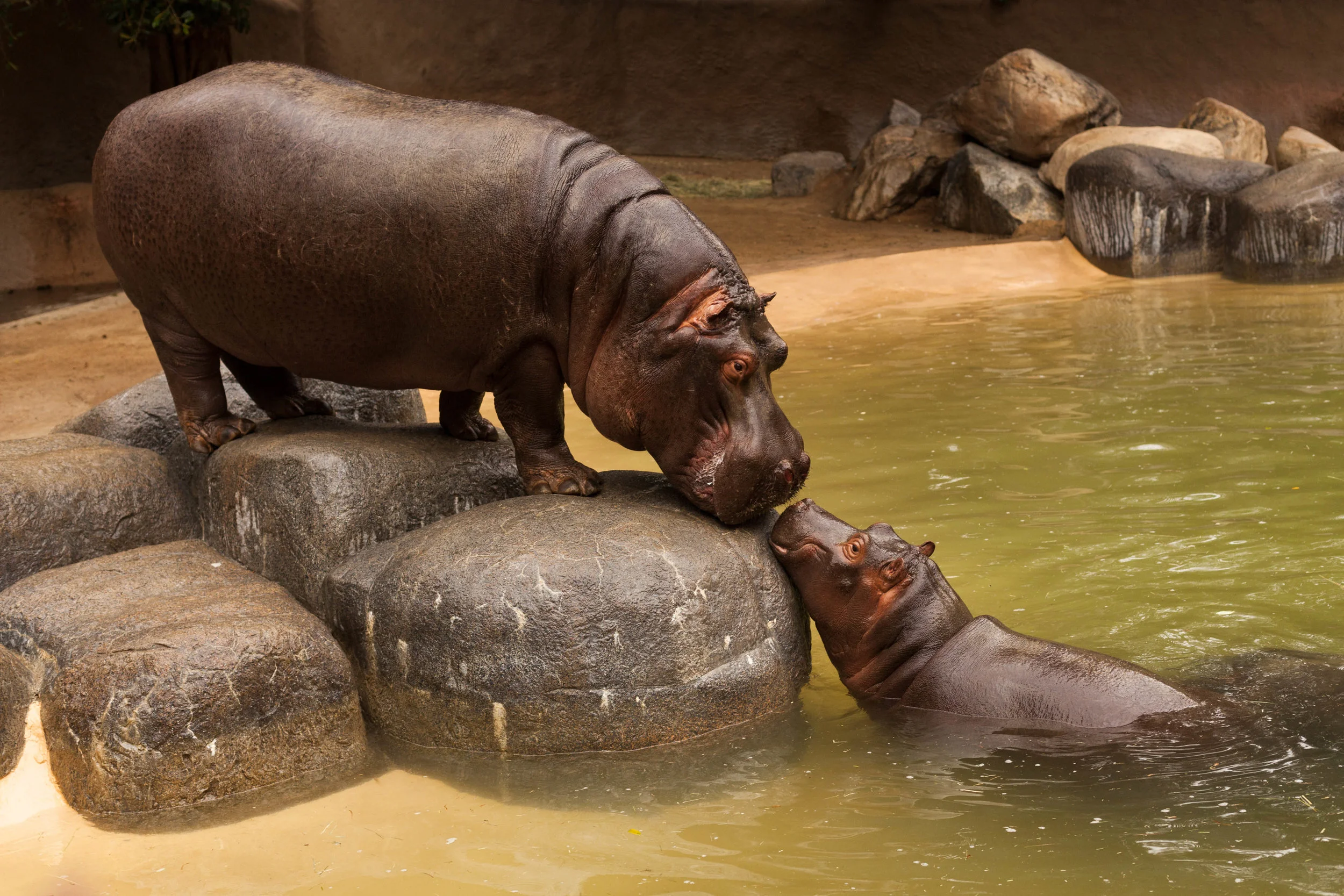Hippopotamus
"Royal Flush" by Viktor Kalvachev (Digital)
“I love ALL animals, but I do have a particularly soft spot for hippos. It’s one animal I find myself repeatedly drawn to and wanting to illustrate. We are so lucky to live on such beautiful planet with fantastical creatures all around us. I hope we don’t lose to many of them before we get smarter and turn things around for the better.”
Your purchase is helping Expedition Art and Saving Species purchase land in Sumatra! Learn more about the project.
Habitat
The hippopotamus is native to 29 African countries. It’s range once extended from the Nile Delta to the very southern tip but habitat loss and human encroachment have caused their habitat to be largely restricted to protected areas. They require some form of water to survive as their skin will crack if it is not kept moist.
Family life
Hippos are highly social animals. They are usually found in mixed groups of about 15 individuals with school systems containing females and adolescents. Territory is generally held somewhat aggressively by a dominant male and violent fights can occur between males in order to obtain regency over a swath of land. Females generally have offspring every other year. This is primarily due to the fact that infants may nurse for up to 18 months. Vocalizations can be heard by hippos both above and below the water.
Lifespan
Hippos live about 40 years in the wild.
Hunting Habits/Diet
Hippos have nocturnal eating habits and will leave the water at night to graze. They can be active for anywhere from four to five hours, eating primarily grass. They will eat about 80 pounds of food per night and travel huge distances to graze.
Population
There is an estimated population of 125,000-150,000 hippos in the world today.
Fun Fact
Hippos are amphibious, spending as many as 16 hours per day in the water. They rely on water and mud to keep them cool from the hot African sun and secrete a liquid that acts as both an antibiotic and a sunscreen. They can weigh 100 pounds at birth, jog at speeds of 15 miles per hour and can sprint up to 30 miles per hour.
Why are They Endangered?
The hippo is the most dangerous animal in Africa and are often shot in order to prevent aggression towards humans. Their fat and ivory tusks are considered valuable and they can be killed by poachers for the profits from selling these items. Habitat loss due to encroachment by the human population also threatens their survival. Hundreds of hippos are shot each year to minimize human-wildlife conflict. Hippo fat and ivory tusks are also valuable to humans. As human populations grow, they encroach on wildlife habitats and further threaten the hippo.
Status
Vulnerable

